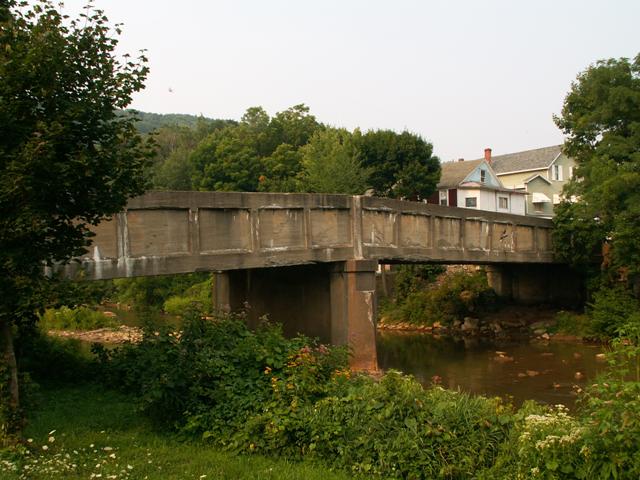We Recommend:
Bach Steel - Experts at historic truss bridge restoration.
Hooversville Bridge

Primary Photographer(s): Nathan Holth and Rick McOmber
Bridge Documented: August 2, 2007
Hooversville: Somerset County, Pennsylvania: United States
1914 By Builder/Contractor: Farris Engineering (Bridge) Company of Pittsburgh, Pennsylvania
Not Available or Not Applicable
80.0 Feet (24.4 Meters)
166.0 Feet (50.6 Meters)
17.4 Feet (5.3 Meters)
2 Main Span(s)
554021013003700

View Information About HSR Ratings
Bridge Documentation
This bridge no longer exists!
View Archived National Bridge Inventory Report - Has Additional Details and Evaluation
This bridge was demolished and replaced!
Some places (like the entire state of Michigan) do not have a single bridge like this. Although there are more examples of this technology in Pennsylvania, this does not mean these bridges are common and unworthy of preservation. At least some of these bridges should be preserved. The Hooversville Bridge seems like an excellent candidate.
This bridge is essentially a "normal" two-span through plate girder that is encased in concrete. Engineers experimented with concrete encasing in the early twentieth century in an attempt to try to protect and prolong the life of the steel. The technique did not last however, and by 1940 was in general no longer used.
The plate girder itself can in fact be seen today because at the ends of the bridge the concrete has deteriorated slightly, revealing the ends of the girders. Also, the shape of the concrete is similar to a plate girder, where one can see the ribs on the concrete, which cover the ribs that appear on most plate girder walls.
Information and Findings From Pennsylvania's Historic Bridge InventoryDiscussion of Bridge The 1914, 2 simple span, 166'-long (2 @ 83'), built up thru girder bridge is supported on concrete abutments and a concrete pier. The bridge, which has a camber, is completely encased in concrete. The bridge is an example of a common type with no innovative or distinguishing detail. Girder bridges were first developed by the railroad industry in the 1840s, and they were used on vehicular roadways in Pennsylvania beginning in the late 19th century. Neither the bridge nor its setting are historically or technologically significant. Discussion of Surrounding Area The bridge carries a 2 lane of a borough street and 1 sidewalk over a river in the central part of Hooversville with undistinguished and altered late-19th and early-20th century houses and commercial buildings. Many have modern additions, replacement siding and windows, and rebuilt or lost porches. The area lacks the cohesiveness and architectural significance to be a potential historic district. Bridge Considered Historic By Survey: No |
![]()
Photo Galleries and Videos: Hooversville Bridge
Bridge Photo-Documentation
A collection of overview and detail photos. This photo gallery contains a combination of Original Size photos and Mobile Optimized photos in a touch-friendly popup viewer.Alternatively, Browse Without Using Viewer
![]()
Maps and Links: Hooversville Bridge
This historic bridge has been demolished. This map is shown for reference purposes only.
Coordinates (Latitude, Longitude):
Search For Additional Bridge Listings:
Bridgehunter.com: View listed bridges within 0.5 miles (0.8 kilometers) of this bridge.
Bridgehunter.com: View listed bridges within 10 miles (16 kilometers) of this bridge.
Additional Maps:
Google Streetview (If Available)
GeoHack (Additional Links and Coordinates)
Apple Maps (Via DuckDuckGo Search)
Apple Maps (Apple devices only)
Android: Open Location In Your Map or GPS App
Flickr Gallery (Find Nearby Photos)
Wikimedia Commons (Find Nearby Photos)
Directions Via Sygic For Android
Directions Via Sygic For iOS and Android Dolphin Browser
USGS National Map (United States Only)
Historical USGS Topo Maps (United States Only)
Historic Aerials (United States Only)
CalTopo Maps (United States Only)


